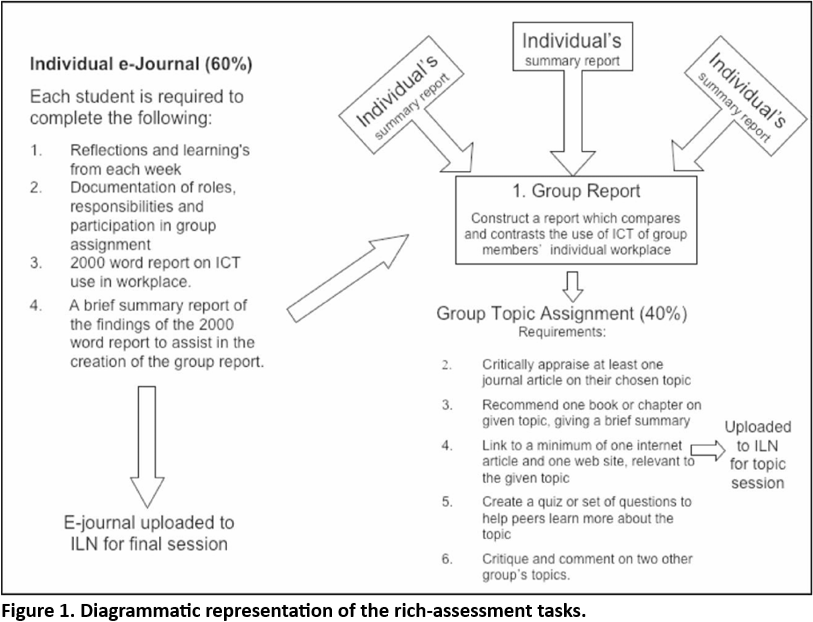
Using text comparison software
 المؤلف:
Sue Trinidad & Robert Fox
المؤلف:
Sue Trinidad & Robert Fox
 المصدر:
Enhancing Teaching and Learning through Assessment
المصدر:
Enhancing Teaching and Learning through Assessment
 الجزء والصفحة:
P386-C32
الجزء والصفحة:
P386-C32
 2025-08-08
2025-08-08
 500
500
Using text comparison software
The Masters program has adopted, for a trial period, the text comparison software Turnitin (http://www. turnitin.com/). Students are encouraged to pre-check their work in Turnitin before they submit their assessments. This enables students to check that their work is plagiarist free before formal submission. Although assessment tasks in this foundation module are based on personalized research and comment on student's own individual workplaces, they are encouraged to include references to relevant research literature, quoting where appropriate from other sources than their own. Turnitin has become fully integrated into ILN, allowing individual students and teachers to submit and view reports, while whole class submissions are automatically batch loaded into Turnitin, via ILN.

Turnitin automatically searches through all electronic submissions and compares them with a 4.5 billion document database, which includes resources from websites, journals, books, newspapers and previous student assignment submissions. Turnitin uses web crawlers or spiders to search the billions of pages, phrases and words that are electronically stored, in fractions of a second and compares its database with the submitted student assignment. "Turnitin's spiders are adding 40 million pages from the public Web, plus 40,000 students' papers each day" (Tenner, 2005). Any passage or phrase that bears resemblance to submitted student work is noted and displayed in a generated report sheet that color codes the degree and quantity of similarity between the submitted work and other texts in the database. The similarity index (http://www. turnitin.com/) can then be scrutinized to ascertain whether plagiarism has actually taken place.
Turnitin for this purpose has proved a useful tool as it allows students to take responsibility for their own writing, correct citing and referencing. As one student said: 'it has forced me to adopt a much more rigorous approach to citing other people's work ... this more academic disciplinary skill will be very useful to me in future modules on the course'. However, not all students have been positive about the introduction of Turnitin into the course, as one student noted 'I am not sure I want my assignment to be permanently kept in Turnitin databases for others to see'. It should be noted however that only the class lecturer and the individual student have access to individual assignments submitted to the Turnitin database. It is important to set the foundations of good learning early in the MSc[ITE] program along with the use of such tools to assist students in developing sound study practices.
 الاكثر قراءة في Teaching Strategies
الاكثر قراءة في Teaching Strategies
 اخر الاخبار
اخر الاخبار
اخبار العتبة العباسية المقدسة


